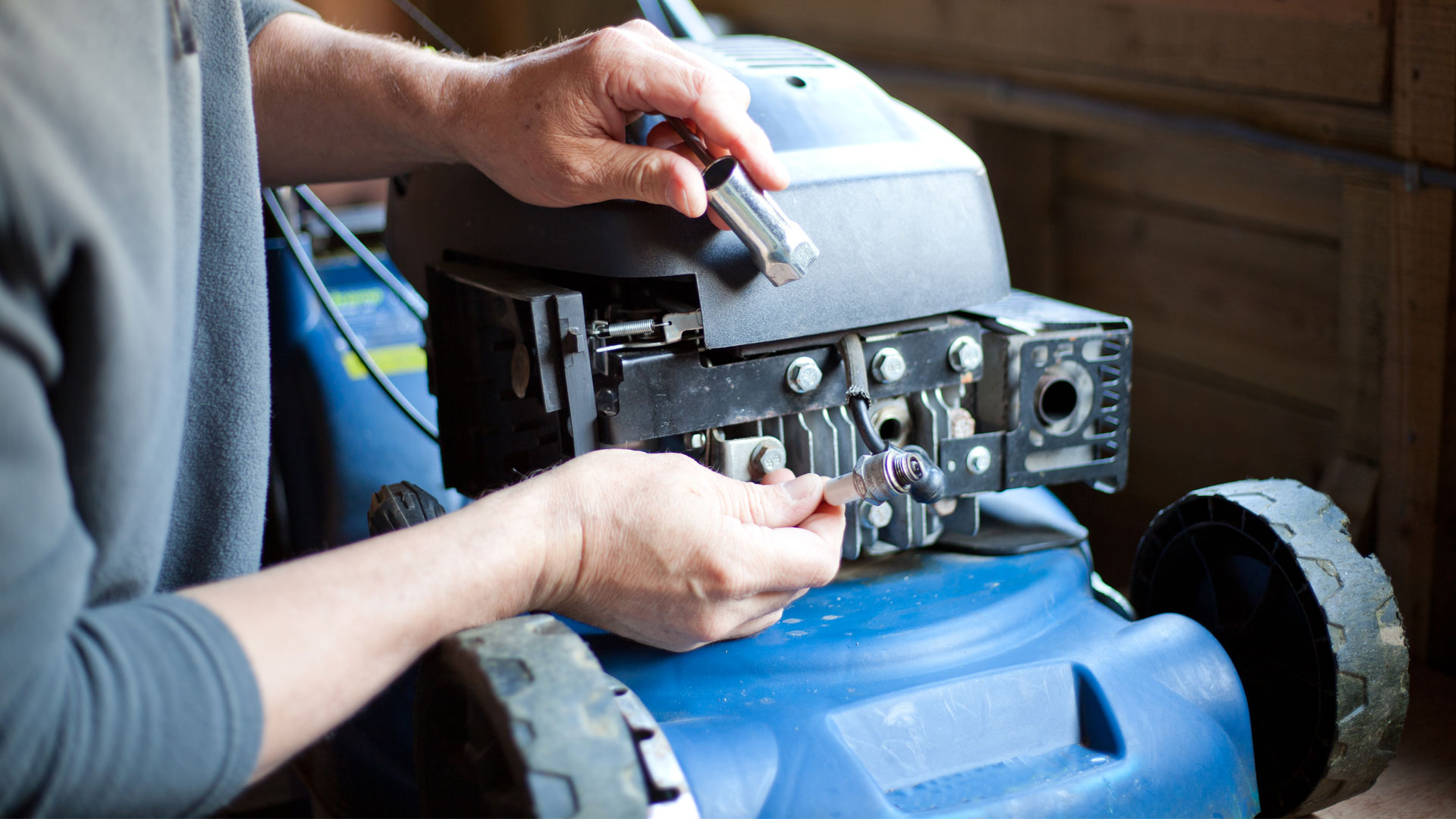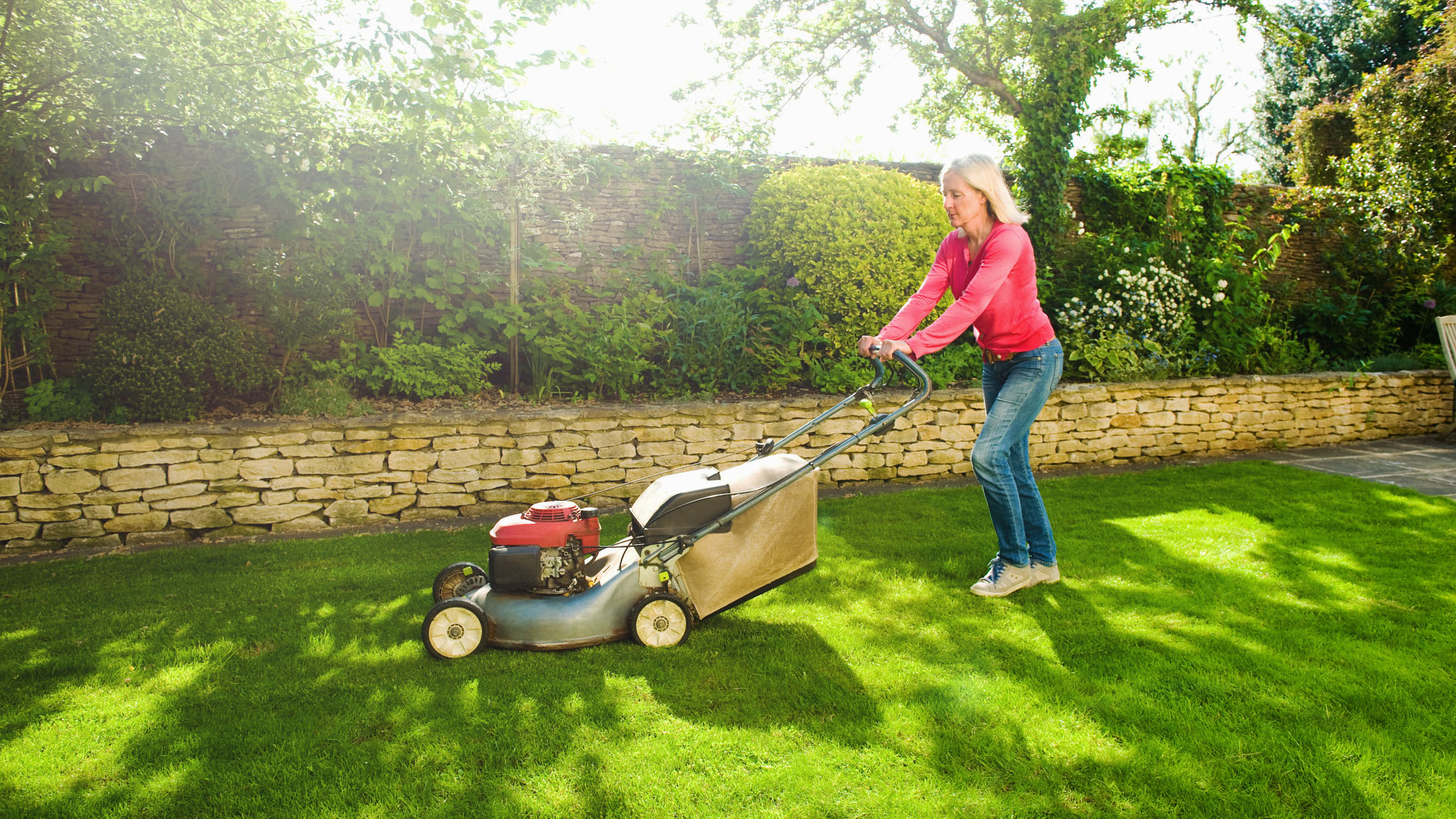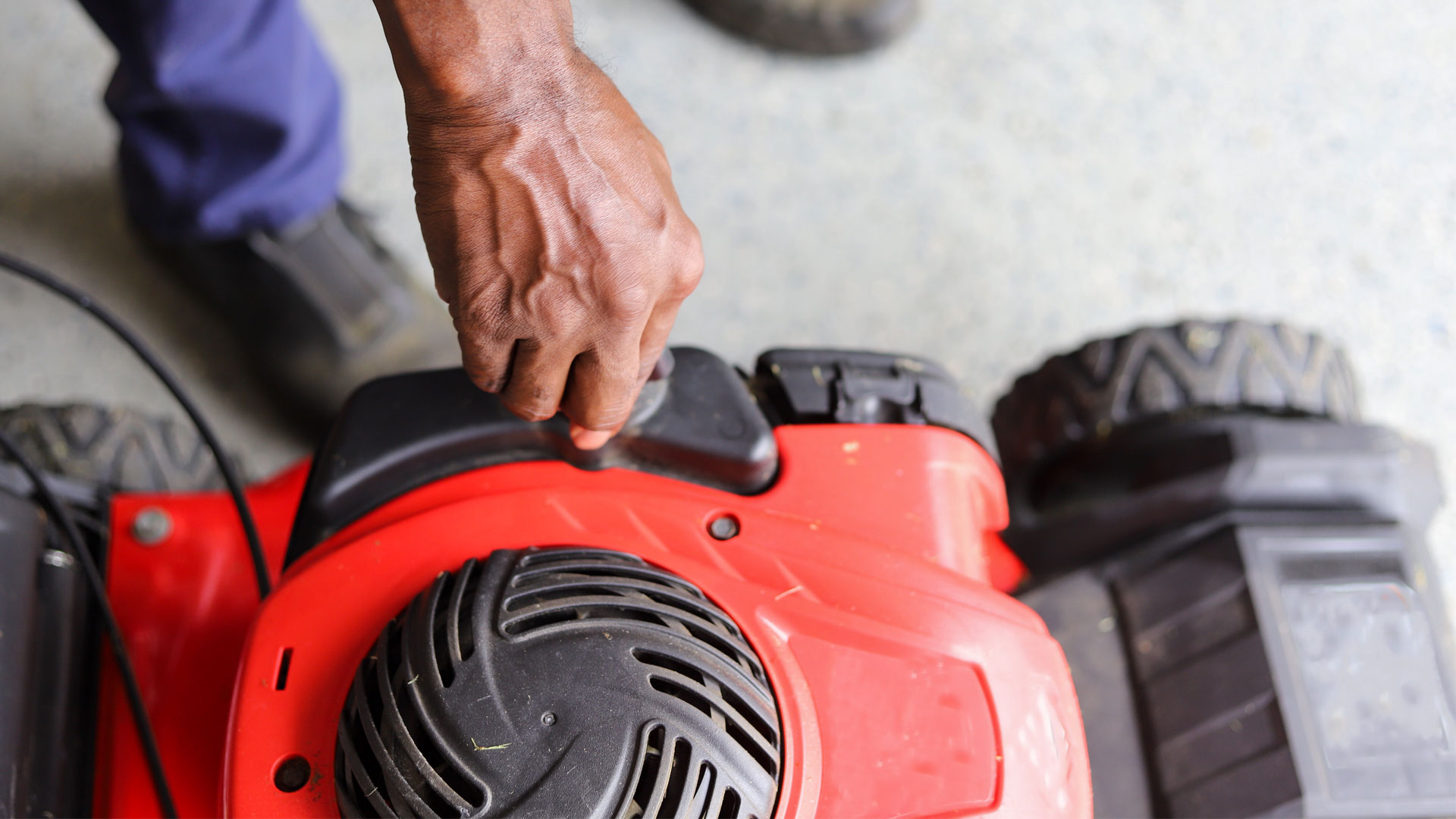A perfectly mown lawn is a great asset to your yard but what do you do if your lawn mower won’t start? We’ll take you through some of the most common mower problems and tell you how to fix them.
Even if you’ve got one of the best gas lawn mowers, sometimes these trusty tools give up on us which is why we’ll show you how to spot problems, the most common reasons a mower won’t start, and what to do about it. We'll also give you tips on how to fix the best riding lawn mower.
It’s well worth noting, however, that before starting any repairs, make sure your mower is unplugged or switched off with the brake engaged. Disconnect the spark plug cable and don’t repair it near naked flames. Make sure to always service the machine on a flat surface in a well-ventilated shed or garage with the doors open, or better still, go outdoors. Wear safety gloves and goggles, and dispose of used oil considerately at an auto shop or your city dump.
Usually, problems with starting your lawn mower will happen after it has been put away for winter.
Leaving your machine for weeks without use can cause moving parts to gum up. Valves, filters, and seals can become clogged with dirt and dust. It’s best to give your machine a service at the beginning of the new mowing season and we’ll be running through exactly how to do that.
How to start a lawn mower after winter
When you first bring your mower out of the shed or garage in the spring, give it a good once-over before attempting to start it. Clean your machine, especially places where cut grass can accumulate. Oil moving parts and check that cables are problem-free. You may need to change the oil and gas (we tell you how to do this below). Once satisfied that your machine is clean, lubricated, and well maintained, you can turn it on.
What causes a lawn mower not to start?
If you’ve followed the advice above and your machine still won’t start, there are several problems that might be happening.
For all types of mower, a blockage to the blades may stop the machine from working. To tackle this, check the cutting deck to make sure it’s clear and clean, remove any string, branches or vegetation, and check no blades are broken.
If you have one of the best gas lawn mowers, you need the combination of fuel plus a spark to start the engine. The spark comes from a spark plug with an ignition provided by a pull-cord or key. If the cord is stuck or difficult to pull, it can be impossible to get it to spark well enough to ignite the gas. If there’s a problem with the spark plug, ignition, or cables, that can also cause the machine to fail to start.
For even the best electric mowers, you need a good power source, which might be a cable and plug, or a rechargeable battery. Problems can be due to a break in the cable, a loose connection, or a problem with the starting lever. Problems with rechargeable machines may be due to the battery not charging properly.
Robot machines can face problems with charging, connectivity and obstacles. They can also come into difficulty with hilly lawns.

How to fix a lawn mower that won’t start
For gas and ride-on mowers:
- Check the oil level before starting the machine and see that it is clear, not dark and full of debris; if it is, you should change the oil.
- Replace the old gas. Empty the gas from your machine (follow your manual instructions) and replace it with new fuel. For more on this, head to our feature on how to change lawn mower oil.
- Next, change the air filter, which may be clogged with dust and debris. If your machine starts up but stops when you have been mowing a while, a clogged air filter is often the culprit.
- The carburetor can get clogged with debris from fuel that has been sitting in the machine. Remove and soak in a carb-cleaner (vinegar also works) or replace if necessary.
- A faulty sparkplug can cause problems, so remove it and check for discoloration or corrosion. You may be able to clean and replace it but it’s often best to install a new one. Check the cable to ensure it provides a good current. Take extra care with this step.
- With the brake engaged, check for slackness in the brake cable and tighten, following your machine’s manual.
- If gas isn’t getting to the engine, see if you can spot a broken or clogged fuel pipe and replace it necessary.
- Check to see if there is something impeding the pull-cord and free it if need be.
For electric mowers:
- Check the cable is not broken and that it’s attached to the machine and the plug. If it’s damaged, or you have accidentally cut through it, you can replace it. Check your instructions for how to do this.
- Check for something blocking the starter switch – the cord may slip behind it, so make sure you fix it out of the way. If the switch fails, you can replace it, though it’s more tricky than replacing a cable, so make sure you read up.
- Clear the air vents of leaves and dust.
- Rechargeable batteries may come to the end of their life and need replacing, though most should last 2,000 charges. Fully charge the battery, then let it run down completely before charging again.

How do I know if my lawn mower spark plug is bad?
Spark plugs wear out and the most common symptoms of a bad sparkplug include failure to start, the machine being harder to start, poor performance, and using excess fuel. Remove the plug to check for discoloration or corrosion and replace it with a fresh one.
Can old gas cause a lawn mower not to start?
Gas deteriorates over time too. Sediments form and octane-boosters evaporate, making gas less combustible. Siphon the gas out, following the maker’s instructions, clean or replace the carburetor and fill with fresh gas.
Two-stroke or four-stroke problems; what’s the difference?
Problems and their solutions can be different depending on whether your machine has a two-stroke or a four-stroke engine.
A two-stroke engine is usually found on lawn mowers or chainsaws. Because their moving parts are not in a separate, oil-filled chamber, they can wear out faster than those in four-stroke engines. They use a lot of oil too, which can become expensive and they suffer from greater wear and tear and give off higher emissions than a four-stroke engine. However, they are lighter, simpler machines and therefore easier to use and to repair yourself.
If you have a large lawn, you might choose a four-stroke, riding lawn mower, that has a sealed engine, lubricated compartment allowing moving parts to run much longer before wearing out; it has fewer emissions too. They’re more complex machines and you’re best advised to have them serviced and fixed by your dealership, though some maintenance and quick fixes can still be done by you if you’re handy.

